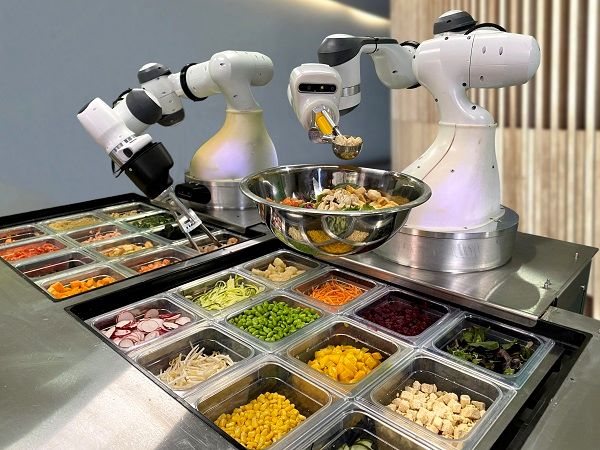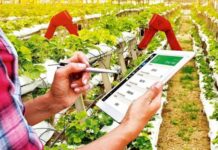According to a recently published research report by Fact.MR, a leading provider of market research and competitive intelligence, the Global Food Robotics Market is anticipated to reach a valuation of US$ 2.47 billion in 2023. The research further forecasts a Compound Annual Growth Rate (CAGR) of 12% for the demand of food robotics worldwide between the years 2023 and 2033.
The realm of food robotics encompasses the utilization of robots and automated solutions to enhance various facets of food production, processing, packaging, and distribution. This approach yields several advantages, including heightened efficiency, diminished labor costs, enhanced food safety measures, and the ability to satisfy the escalating consumer demands for consistently high-quality food products.
Key Segments of Food Robotics Industry Research Report
Food robotic systems find diverse applications in food manufacturing, processing, quality control, and the realm of robotic food delivery. The increasing demand for these systems is attributed to challenges like labor shortages and the imperative to adopt more sustainable food production practices while rigorously adhering to stringent food safety requirements.
Key Takeaways from Market Study
- The global market for food robotics is estimated at a valuation of $2.47 billion in 2023.
- Food robotics sales are expected to rise at 12% CAGR between 2023 and 2033.
- The global market is projected to reach US$ 7.8 billion by the end of 2033.
- Asia Pacific and Europe together accounted for 58% share of worldwide revenue from low payload food robotics.
- Significant growth rates are predicted for the market in Asia Pacific, Latin America, the Middle East, and Africa during the forecast period (2023 to 2033).
“Food robots tackle important challenges and possibilities in the food and beverage industry by providing automation solutions that improve efficiency, safety, quality, and sustainability. They help food manufacturers respond to changing consumer expectations and market dynamics while maintaining regulatory compliance and managing labor-related constraints,” says a Fact.MR analyst.
Food Robotics Driving Much-Needed Digitization in Food Industry
Growing adoption of digitization in the food industry is significantly driving the sales of food robotic solutions. Food robotic systems are becoming key components of smart production environments as the industry undergoes digital transformation. They allow for the seamless integration of sophisticated technologies such as IoT, data analytics, and automation, assisting food manufacturers in optimizing processes, improving product quality, and increasing overall efficiency.
Food robots can easily carry out the customization and personalization of food products made available by digitization. Incorporation of AI and machine learning in digitized food production contexts has helped improve the working capacity of these robots.
Rising Preference for Packaged Food
Demand for packaged food has been on the rise due to continuously changing lifestyles, urbanization, and dietary preferences. More people are opting for easy and tasty ready-to-eat meals, snacks, and processed foods. This has increased the demand for packaged food, which places additional pressure on food manufacturers to meet production quotas efficiently and consistently.
Food robotic systems can automate a variety of packaging operations, including filling, sealing, labeling, and quality control, guaranteeing that packaged food products are produced in large quantities and with precision. Food robotic systems help minimize human touch and lower the risk of contamination during the packaging process and can improve the shelf-life and freshness of packaged foods.
Competitive Landscape
The expanding adoption of robotics in food processing and production is propelling market growth. The increasing number of significant market players is influencing competitiveness, as suppliers invest in research and development to devise innovative solutions catering to industry needs.
The realm of food robotics comprises a blend of entrenched competitors, innovative startups, and global companies specializing in automation and robotics. Distinctive features of the food robotics market include continual technological advancements, tailoring solutions to align with the food sector’s requirements, and a strong focus on food safety, quality, and efficiency. With the escalating demand for automation in the food sector, competition among these entities is expected to intensify, driving further innovation and industry expansion.
Recent Developments:
- In February 2022, Mitsubishi Electric Corporation introduced a teaching-less robot system technology primarily designed for food-processing facilities. These robots conduct organizational, sorting, and similar operations at human-like speed without requiring constant supervision.
- In April 2021, Rockwell Automation Inc. established a partnership with Comau, aiming to streamline processing and lifecycle management in the food and beverages industry.
More Valuable Insights on Offer
Fact.MR, in its new offering, presents an unbiased analysis of the food robotics market for 2018 to 2022 and forecast statistics for 2023 to 2033.
The study divulges essential insights into the market based on type (articulated, cartesian, scara, parallel, cylindrical, collaborative, others), application (palletizing, packaging, repackaging, pick & place, processing), payload (low, medium, heavy), and end use (beverages, meat, poultry, seafood, dairy, bakery, fruits, vegetables, confectionery, others), across five major regions of the world (North America, Europe, Asia Pacific, Latin America, and MEA).
These insights are based on a report on Food Robotics Market by Fact.MR.









